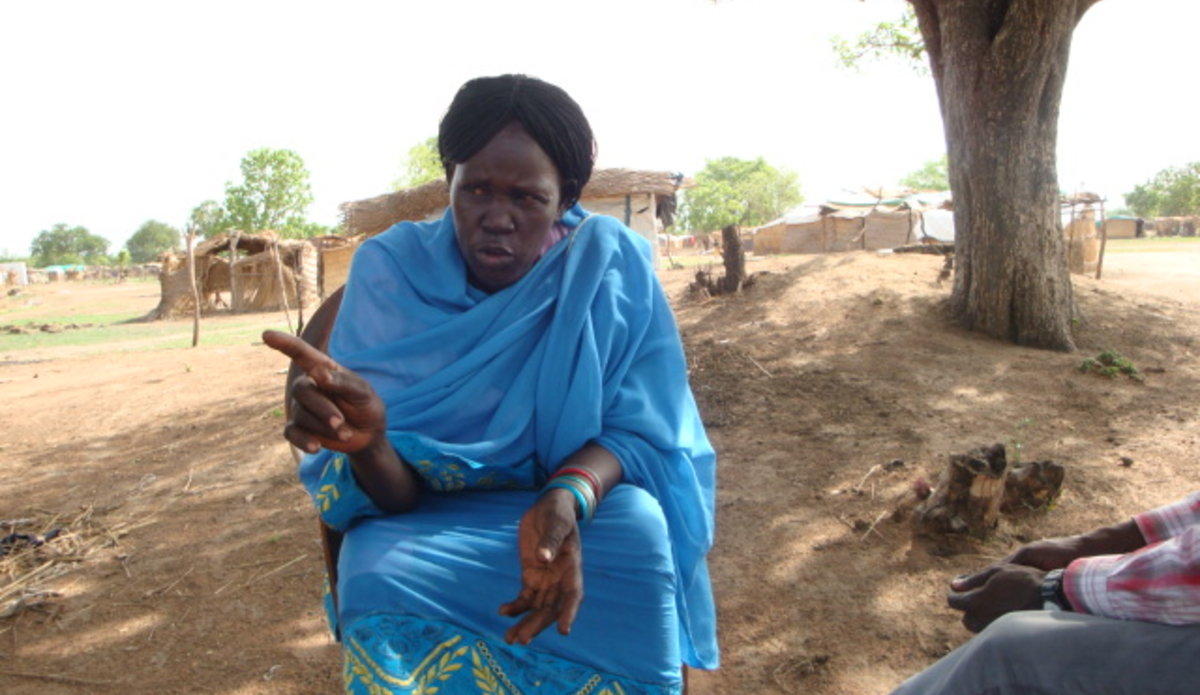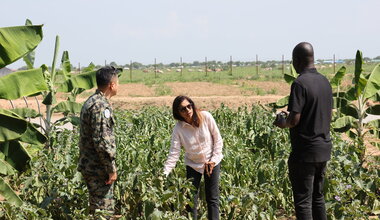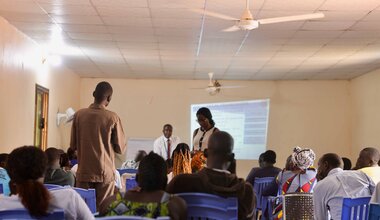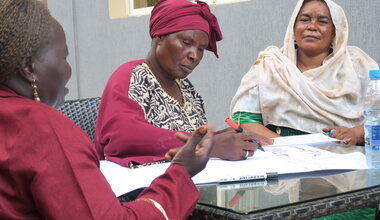Struggling to Survive
Nothing could have prepared Martha Anei Lual for the changes in her life when she and her husband decided over a year ago that it was time to leave Khartoum and return to their hometown in the Northern Bahr El-Ghazal state capital of Aweil.
The prospect of going home to a land that would soon become the world's newest independent nation excited both Martha, who worked as a cook for the Sudan Red Crescent Society, and her husband, a soldier with the Sudan Armed Forces (SAF).
The 45-year-old Martha quit her job, packed up their belongings and set out on the journey to Aweil with her five children. She left behind her husband, who would follow as soon as he was discharged from the Sudanese military and received his retirement benefits package.
Ms. Lual and her kids ended up in a settlement for southerners returning from northern Sudan called Apada that is six kilometers away from Aweil. She received food rations from the UN World Food Programme (WFP) that were intended to last for three months.
She was in touch at the outset with her husband, who was still serving in the SAF and would send Martha money whenever he could.
"(My husband) hadn't got his retirement package yet and was still waiting," she recounted. "Although the conditions were not easy, we managed."
Then one day the phone line to Martha's husband went silent, and she never heard from him again. Suddenly Ms. Lual found herself starting a new life not just as a returnee, but also as a single mother.
Things went from bad to worse. The food rations from WFP ran out. Much of the meager life savings she brought was spent on school fees for Martha's children.
"Life has been difficult," she said. "Home is always best, but when you have to beg for food from relatives and friends, then it is a problem."
Among the states of South Sudan, Northern Bahr El-Ghazal has received the second largest number of southerners who have returned from Sudan with over 70,000.
But it is not well placed to accommodate such an influx. Nationwide Northern Bahr El-Ghazal has the highest rate of poverty with 76 per cent of the population classified as poor by the South Sudan National Bureau of Statistics.
And the 16,000 internally displaced persons scattered around the state are expected to grow in number if fighting between the SAF and the Sudan People's Liberation Army continues along the international border with Sudan.
"The humanitarian agencies and the international non-governmental organisations have given as much assistance as their resources permit," said Takesure Mugari of the UN Office for the Coordination of Humanitarian Affairs.
Compounding the problems facing the state is the high percentage of returnees who have chosen to settle in its cities and towns.
The vast majority of them were expected to end up in rural areas of the state and take up farming.
But over 80 per cent of them have instead opted for urban areas, according to the state government, spurring the growth of slums and taxing public services and infrastructure beyond their limits.
That choice does not seem so surprising with the benefit of hindsight.
"We lived in urban areas (in the north) for a long time," explained Lual Lual Ayam, who moved to South Sudan at the end of 2011 but chose to live near the state capital instead of the mainly rural county of Aweil North where he grew up. "That is the life our children knew. We were not willing to change that."
Mr. Ayam does not regret his decision to settle in an urban environment, but life in South Sudan hasn't turned out the way he had hoped.
"I thought that I would have better access to the facilities that we were used to in Khartoum like schools for my children and health facilities," he said. "Now, (all of) my children are not in school."
 UN
UN United Nations Peacekeeping
United Nations Peacekeeping




